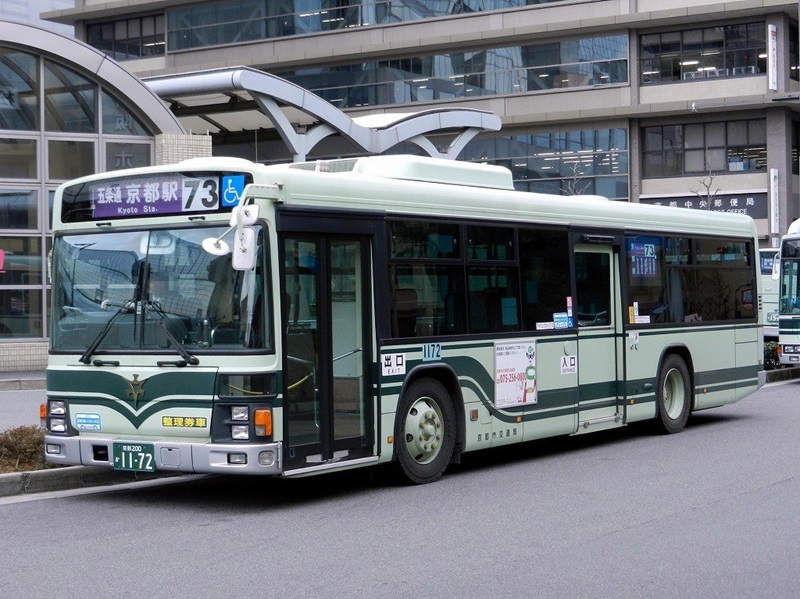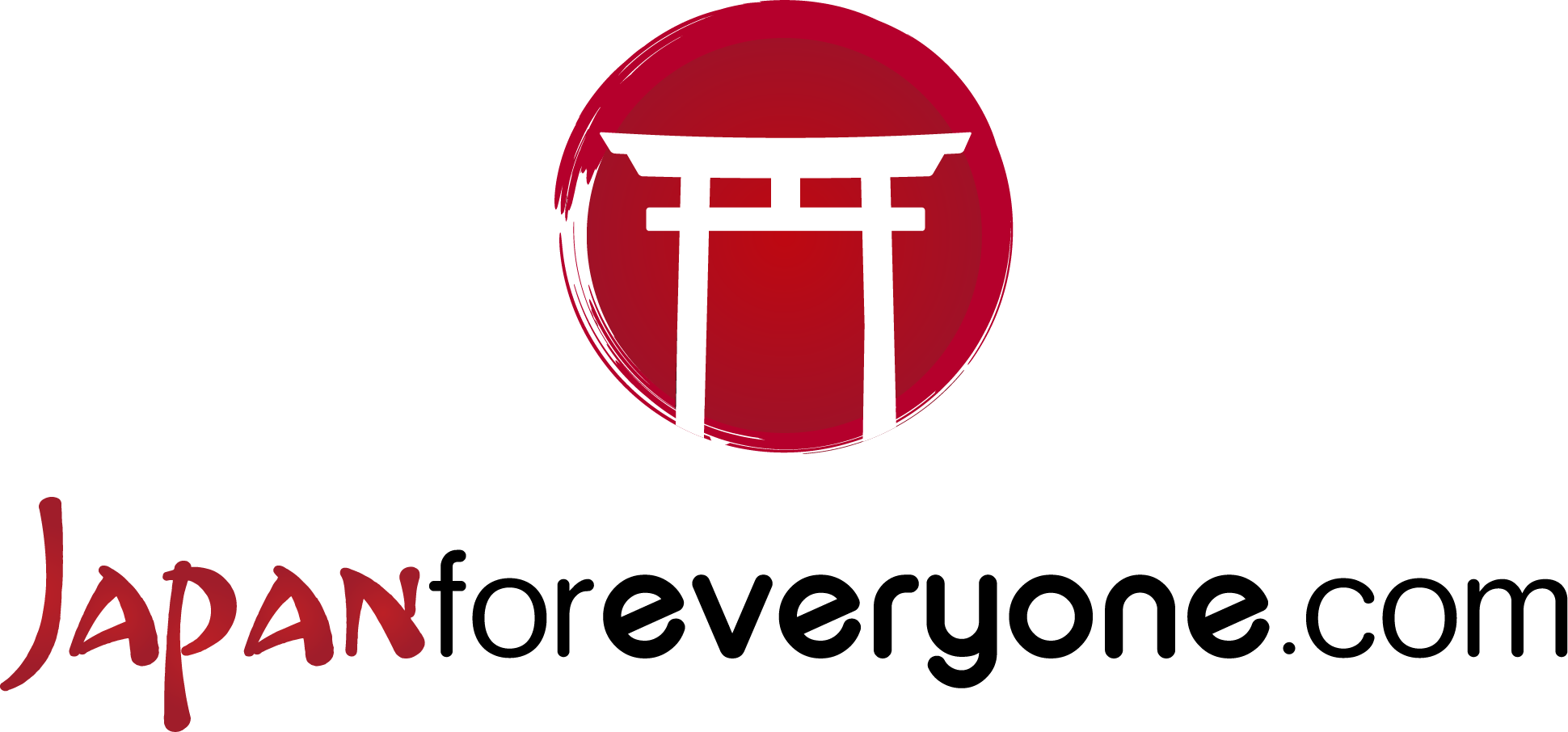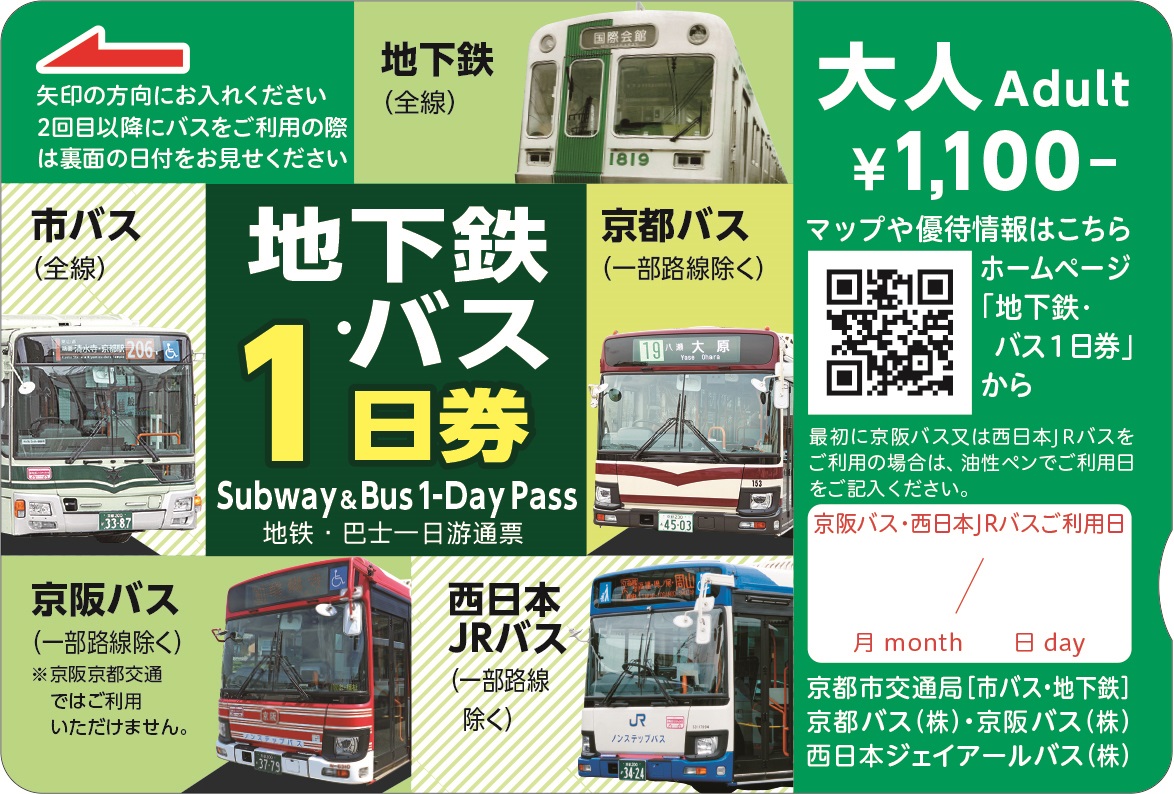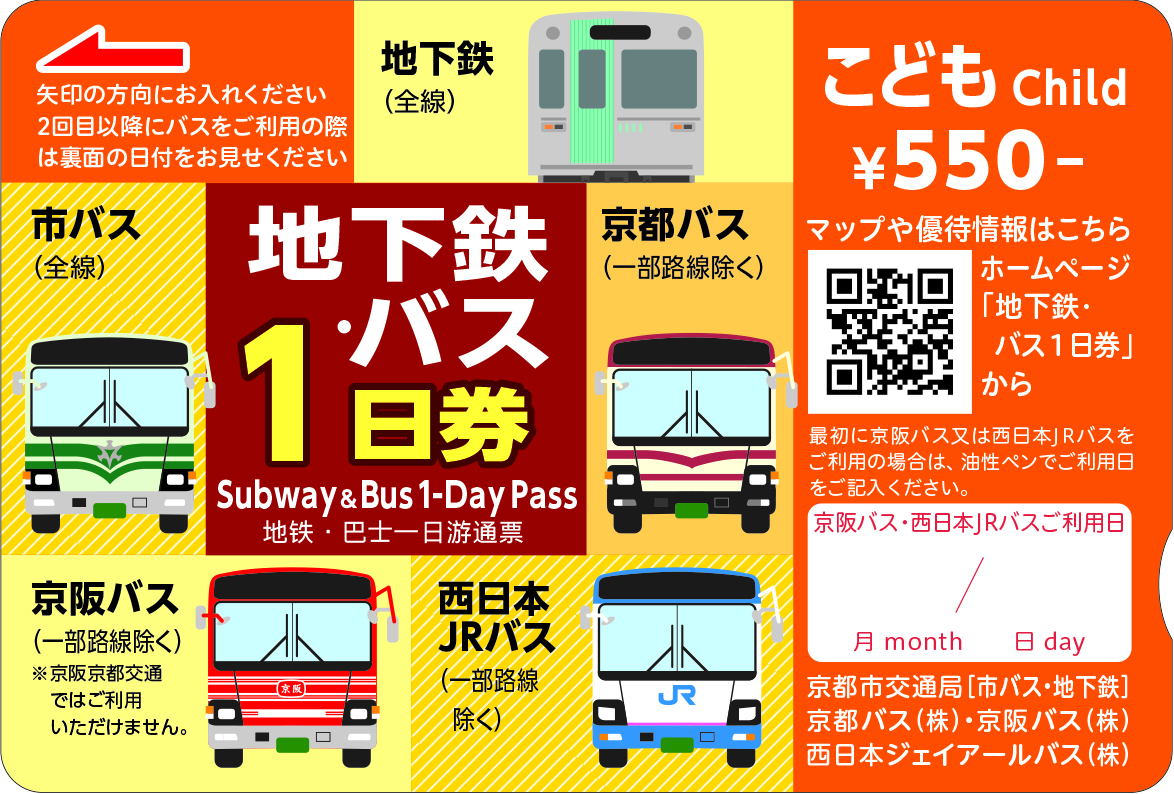Kyoto buses
The best way to get around Kyoto is by bus. In fact, the metro only has two lines that intersect to form a kind of ‘plus’. Kyoto’s major attractions, however, are not reached by metro. To overcome this, Kyoto has an extensive bus network. There are two bus companies in Kyoto, Kyoto City Bus (green buses) and Kyoto Bus (pink-red buses). There are also JR buses that can be used with the Japan Rail Pass (you can find a map at this link). My advice is to use the Kyoto City Bus, the green ones.

Mutimaro, CC BY-SA 3.0, via Wikimedia Commons
How to take the bus
To take the bus, one gets on at the back door. There is no need to buy tickets or passes at newsstands or at the station.
Once on the bus you will find an illuminated board with the next stop indicated (in both Japanese and English) and the driver will also announce the next stop.
To book the stop you can use the appropriate button. Before getting off you have to pay for the ride (230 Yen) by inserting coins into a machine next to the driver.
Some lines leave the so-called flat area (where whatever your destination, you always pay 230 yen), for example lines 16 or 17 to Ohara. On these buses, you will have to pick up a ticket when you get on the bus. A number is indicated on the ticket. Before you get off, just look at the light table above the driver and next to each number will be the price to pay.
Ticket and pass
A single-ride ticket costs 230 Yen (120 Yen for children). So every time you change buses you will have to pay 230 Yen.
There is a combined bus+metro one-day pass that costs 1100 Yen (Subway & Bus One-Day Pass) and allows the use of Kyoto City Bus, Kyoto Bus, West Japan JR Bus, Keihan Bus and the underground.
In Kyoto, there are three special lines called Raku Bus (lines 100, 101, 102). These lines are designed for tourists and only stop near points of interest in the city. On these lines you can use the Subway & Bus One-Day Pass.
At the link below you can download a complete PDF map of Kyoto’s main bus routes. You can pick up a hard copy at the tourist information centre at JR Kyoto Station. I recommend making a printout, as you may not be able to pick up the map at the station right away.
On the buses you can use the main IC Cards such as Suica, Pasmo, Icoca.
Sightseeing Limited Express Bus
As of 1 June 2024, new tourist buses are in service. The Sightseeing Limited Express Buses replace the Rakubus. These buses only operate on Saturdays, Sundays and public holidays. You can find the timetable on the official website.
These buses depart from Kyoto Station and a single ride costs 500 Yen. The two buses are included in the Subway & Bus 1-Day Pass (1100 Yen).
Bus number EX100 serves the western part of the city, passing by Gojo-zaka (Kiyomizudera), Gion and Ginkakuji. The number EX101, on the other hand, stops at Gojo-zaka (Kiyomizudera) and then returns to the station.
On these buses you get on at the front, pay the fare and get off at the central door.


